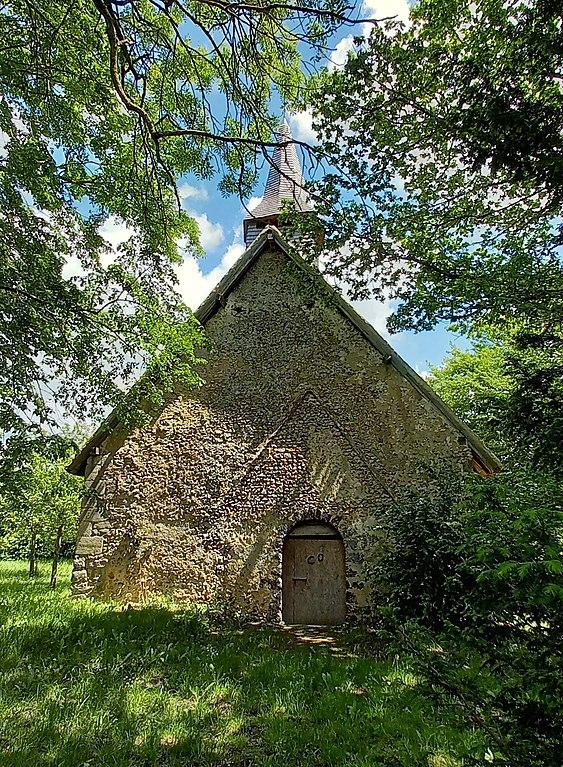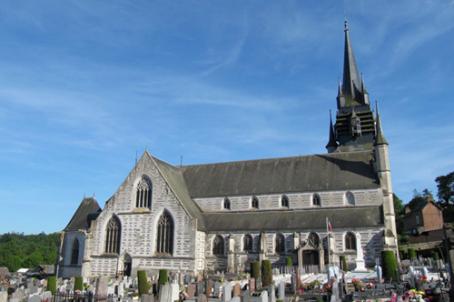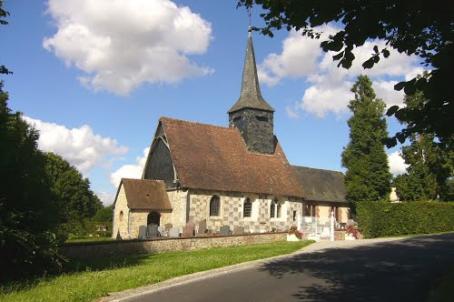Church of Saint-Cyr-Sainte-Julitte de Pierre ronde, Beaumesnil

The Saint-Cyr-Sainte-Julitte church- or Pierre Ronde church - is one of the oldest buildings in Normandy, being built in the 10th century. In the 15th century, this Carolingian building, destroyed by a fire, was covered with an exceptional frame on wooden posts with a paneled vault covered with polychrome paintings. If the church has lost many of its original decorative elements, its beauty, characteristics and colors can still be admired thanks to the magnificent restoration, mirroring the original, carried out by an association of passionate volunteers.
About this building
Saint-Cyr-Sainte-Julitte church, better known as the church of Pierre Ronde, is located in the heart of the country of Ouche, in the commune of Beaumesnil, in the Eure. This parish church, erected in 974, is one of the oldest buildings in Normandy.
From this primitive church there remains only a few basements, a part of the walls of the nave and perhaps the portal. This Carolingian building, built along a longitudinal and oriented plan, followed the traditional style of the time with a nave and a semicircular choir with a flat chevet.
Following a fire, the church was rebuilt in the 15th century. The Romanesque frame was replaced by an exceptional frame on wooden poles with a paneled vault covered with polychrome paintings. steeple covered with essences oak integrated to the first bay was also added.
In the sixteenth century, a new bay was opened in the south wall and a porch, now destroyed, was added ahead of the main facade. The choir, rebuilt in 1715, has a painted paneled ceiling and a surprising mural decoration representing a baldachin.
During the Revolution, the church was desecrated and, in 1932, the church and the cemetery were registered as Historical Monuments. Sold in 1966 by the town, they were looted and then abandoned for over 40 years by successive owners.
In 1992, a voluntary association convinced the Beaumesnil town council to buy the church and its cemetery and organized around thirty projects to restore the church to its original state, while respecting the original materials and traditional techniques. While the church may have lost its flooring and furniture, except sculptures and windows of the fifteenth and sixteenth centuries, it has not lost its charm, as highlighted by the magnificent restorations.





